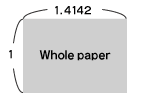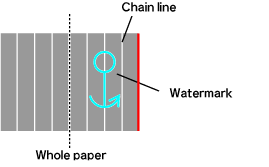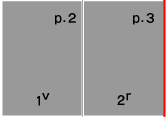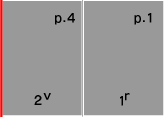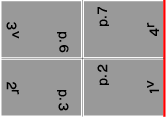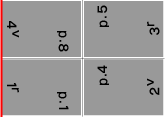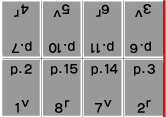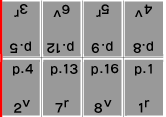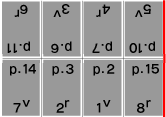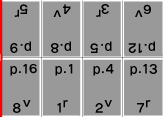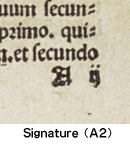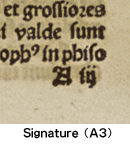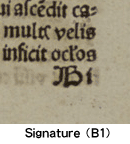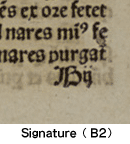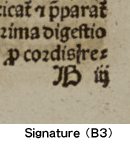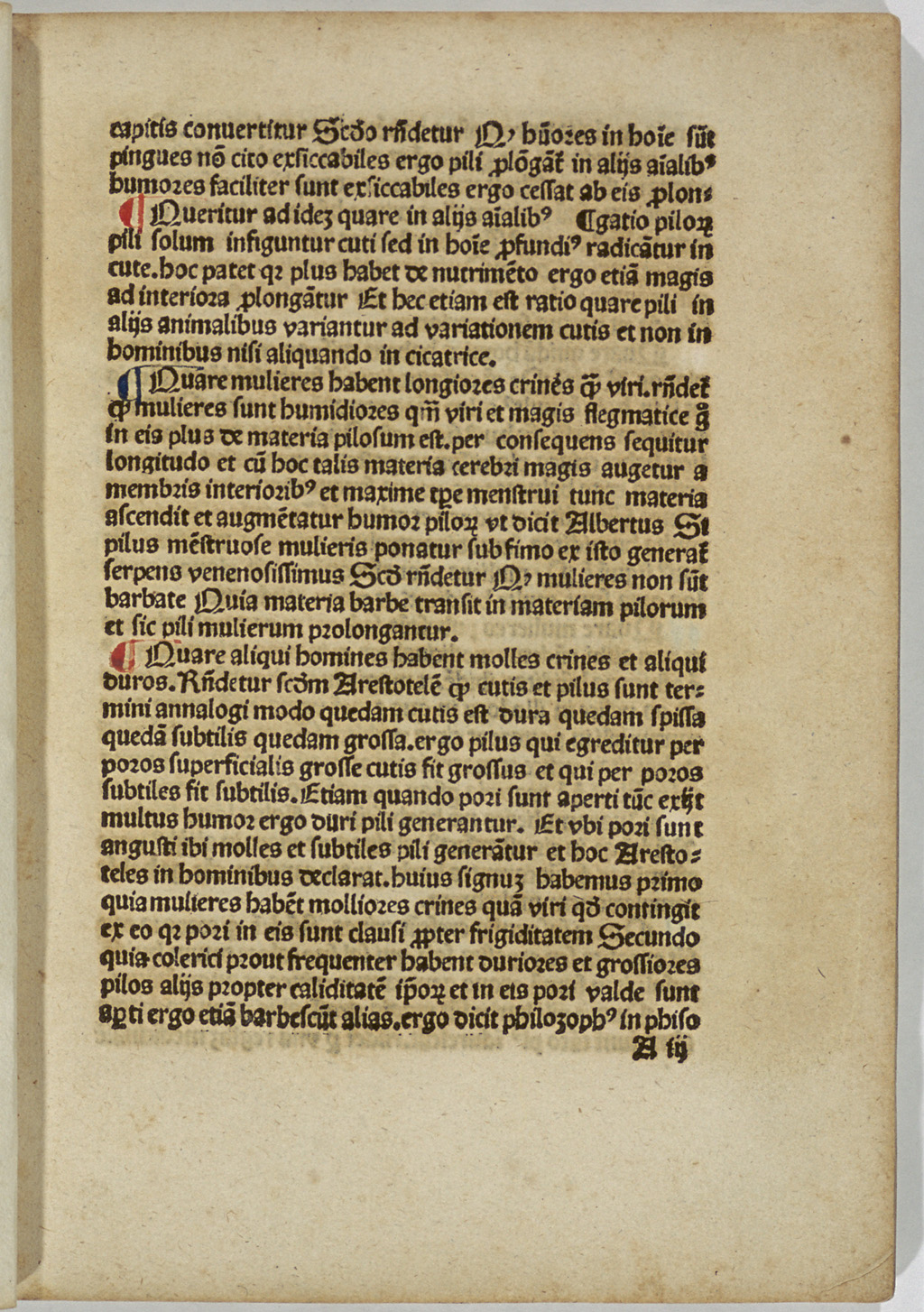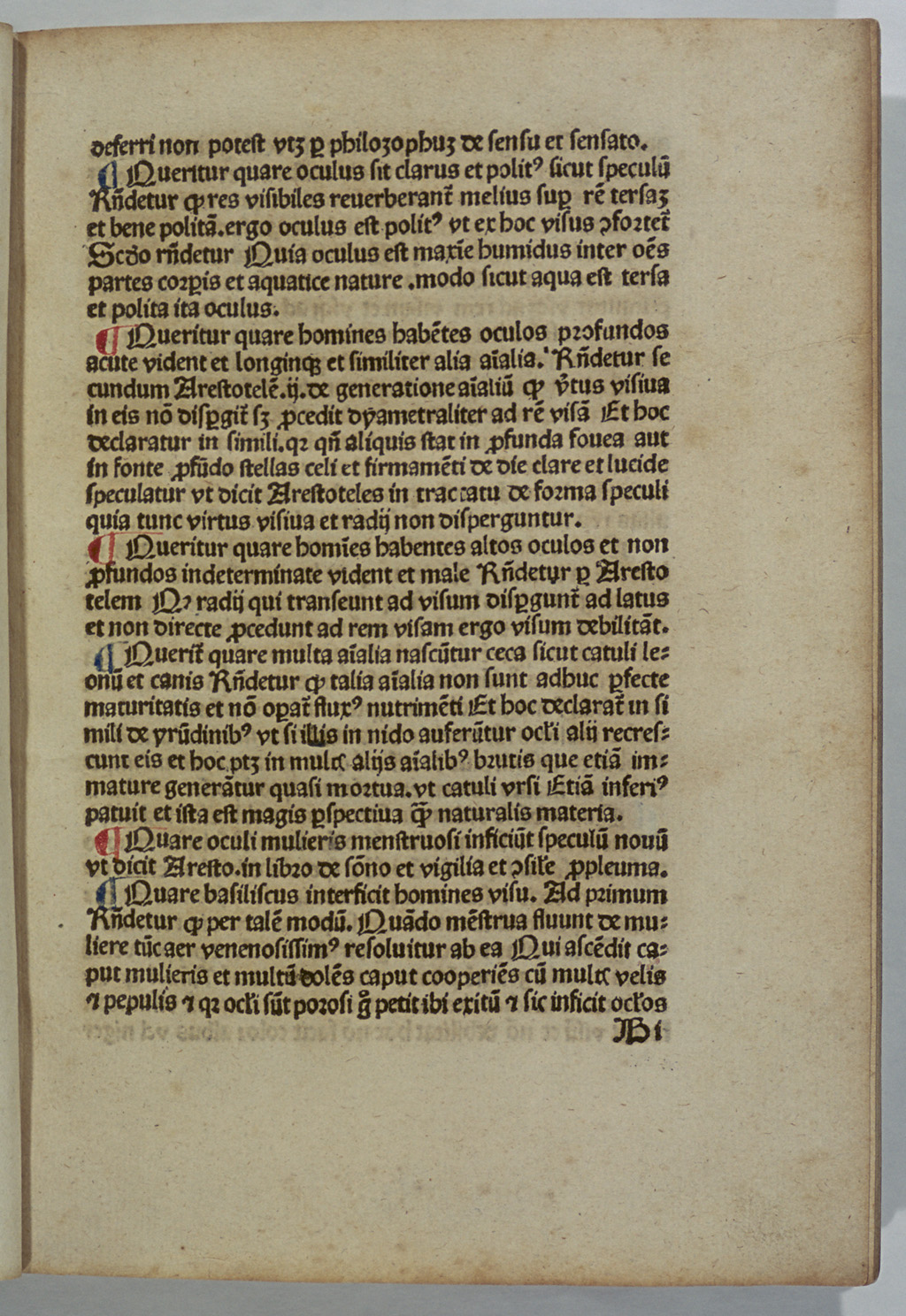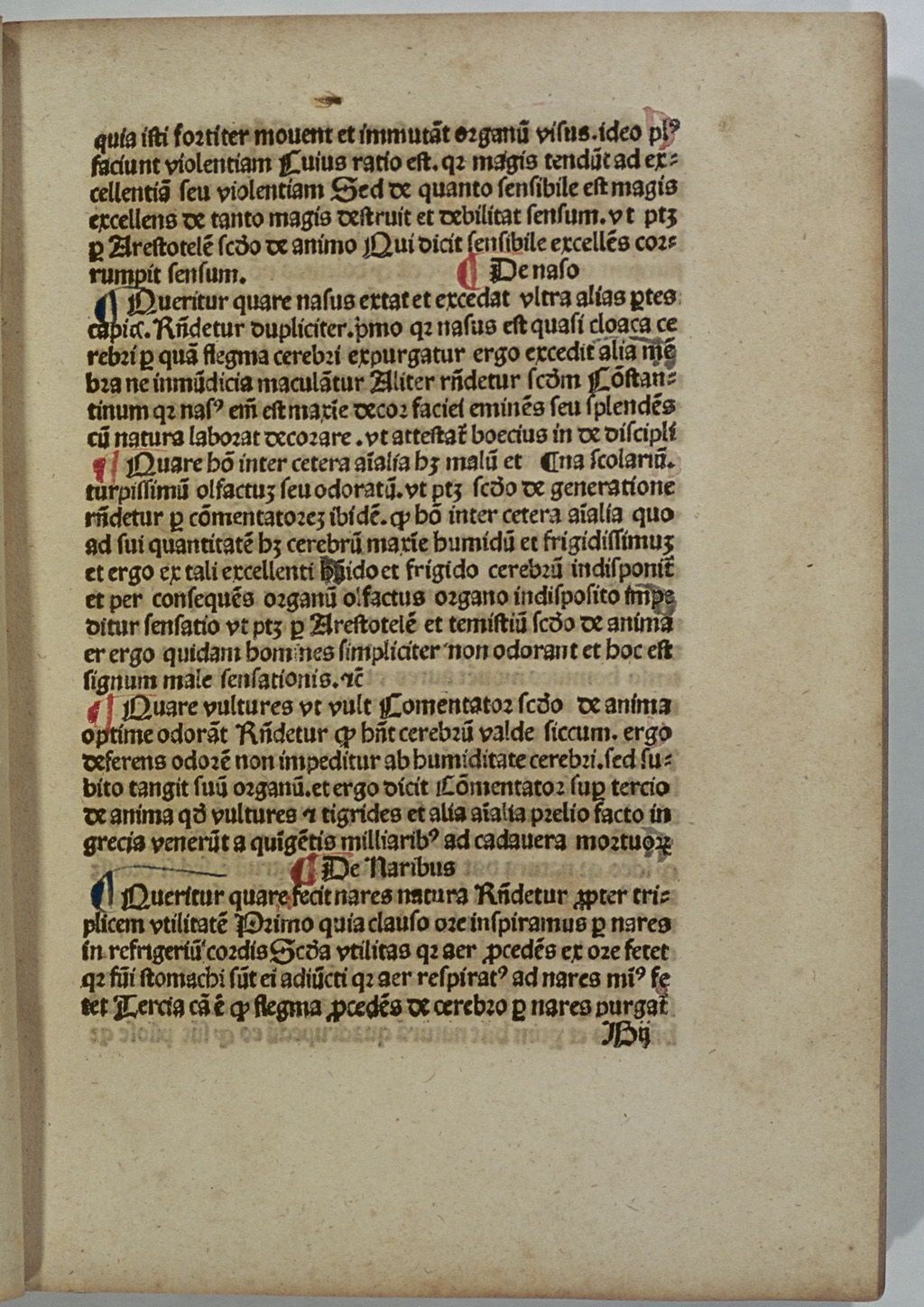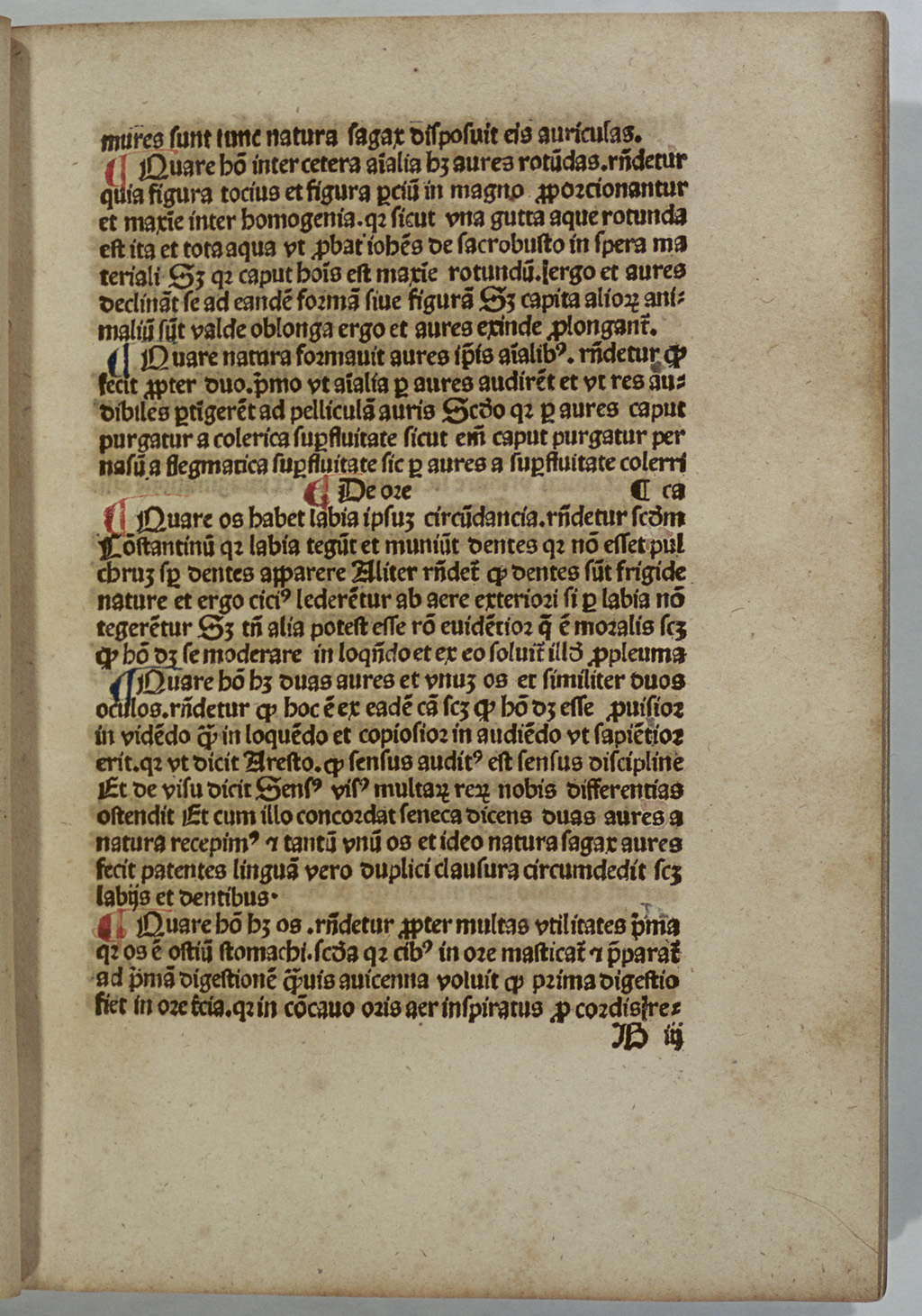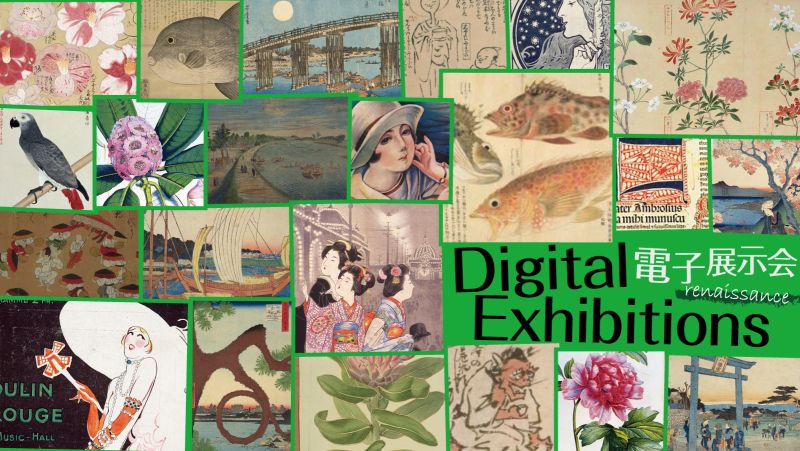Chapter 3
Printing and Book Designs
The English word "paper" derives from "papyrus," a plant grown in Egypt. Papyrus, however, was used for books and documents only until the 7th to 8th centuries. Subsequently, in Europe, animal skins made into parchment or vellum were used as materials for manuscripts. Papermaking techniques, which had originated in China, were brought to Europe in the 12th century, and spread from Spain to Italy, then to France, and finally to Germany. Paper made of rags was used as a substitute for the treated animal skins, but because ink adhered to paper better than to animal skins, from the second half of the 15th century, the papermaking industry made significant progress.
At that time Europeans used rags to make paper by the following method: they were cut into pieces; fermented; shredded into fibers by watermill; and scooped into a mould to dry. According to an inscription held by Museo Civico Medievale di Bologna, the medieval museum of Bologna city, four different sizes of paper were made, ranging from "Imperialle" (740 × 500 mm) to "Reçute" (450 × 315 mm). Paper sizes, however, were not so much standardized as today, and the size varied from one paper mill to another. Paper moulds had a pattern of wires which made the paper over them thinner. The resultant pattern, which is visible when the paper is held against the light, is called a "watermark." Since the early 20th century, studies have been done on watermarks because they can help identify the paper mill and pinpoint the year of printing.
After the medieval times, books took the form of codices rather than scrolls, and printed books came to be made of quires, sheets of paper folded over. Quires are sewn in the middle by thread to make a booklet, the minimum component of a book. By putting a number of quires together and stitching their edges, we can make a book. The number of times the whole sheet of paper is folded determines the size of the book, which is called "format." The format of books produced by folding the whole sheet of paper once is called "folio," twice "quarto," and three times "octavo," which are abbreviated as "2o," "4o" and "8o." These format names are derived from the number of leaves in a quire produced by folding the sheet of paper. A watermark is usually located in the center of one of the two leaves of the whole rectangular sheet folded along the center line. Therefore, the format of the book can be guessed by looking at which leaves of the book have part of a watermark. "Laid" paper of the Incunabula days usually has a slightly thick chain line lengthways and a thin wire line laterally. Therefore, the format can be determined by examining the direction of these lines held against the light.
How are a watermark and a chain line visible in "folio" format? (2o)
Some incunabula are made of not only a quire (a whole sheet of paper folded), but of several sets of quires (gatherings). In the 42-line Bible, most quires consists of 10 leaves (20 pages), and these quires are called "quinternion," which are produced by putting together five folios. Quires were gathered into the number of sheets of paper suitable for stitching with thread and then separated into groups so that the whole job of bookmaking could be easily shared by several workers. According to the number of leaves, quires have different names: "duernion" for four leaves, "ternion" for six, "quaternion" for eight, "quinternion" for ten and "sextern" for twelve. The quaternion can be produced by using 2o(folio)×4, 4o(quarto)×2, or 8o(octavo)×1. For example, Albertus Magnus's Mariale (1488), held by the NDL, is in the 4o format but all its quires consist of quaternions. Aristotle's Problemata (1494) is also in the 4o format, but all its quires consist of ternions. Rampigolis's Figurae Bibliae (1496) is in the 8o format, and most of its quires consist of quaternions.
Example: 2o (folio) imposition
When printing a book, the structure of quires was determined by the volume of text, and then according to the structure the forme was imposed. When one side of the whole sheet of paper was printed at one time, the disposition of pages on the forme is not in the order of pagination but in a rather little more complex order. It is necessary that each leaf be properly arranged in the correct order of pagination when the whole printed sheet of paper is folded. For this purpose, when one whole sheet of paper makes a quire, the disposition of pages will be as shown in the figure on the left. To make a quaternion using 4o made of two sheets of paper, the disposition of pages will be as shown in the figure below.
An example of the page imposition used to make a quaternion made of 4o ×2
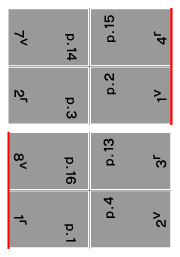
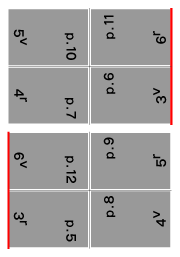
To show the order in which the whole printed sheet of paper should be folded, symbols called a "signature" are often printed in the lower right corners of the first half leaves (recto) of quires. These symbols showed bookbinders the order of quires in the book and the order of leaves in each quire. Usually, the order of quires was indicated by alphabetical letters such as "a, b, c and d," and that of leaves was indicated by numerals such as "i, ii, iii and iv" or "1, 2, 3 and 4." Some incunabula include at the end of the volume a page called the "register," which lists all quire symbols and the words written at the beginning of each leaf in the first half of each quire. In the period of incunabula, numbering the pages was not customary, but it started to take root in the publishing industry in the second half of the 16th century. It was also not customary to print numbers in sequence on the leaves (foliation) of incunabula.
For more information on the book designs unique to incunabula, see the Glossary, which explains the matters described below.


